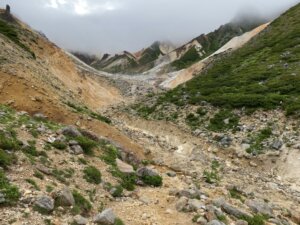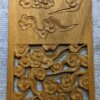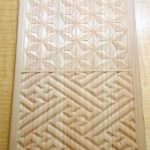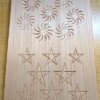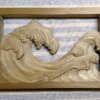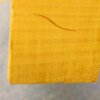How to carve patterns Part 9 ~Yamajimon and Misujidate~
This time, we simply carve a pattern consisting of "straight lines" using a single sharp chisel.

The patterns W are working on are "Yamajimon" and "Misujidate". Perfect for practicing carving straight lines with a sharp chisel .
"Yamajimon" is a pattern made of zigzag lines that appear to climb up the slope of a mountain.
"Misujidate" is a striped pattern composed of three lines as a set.

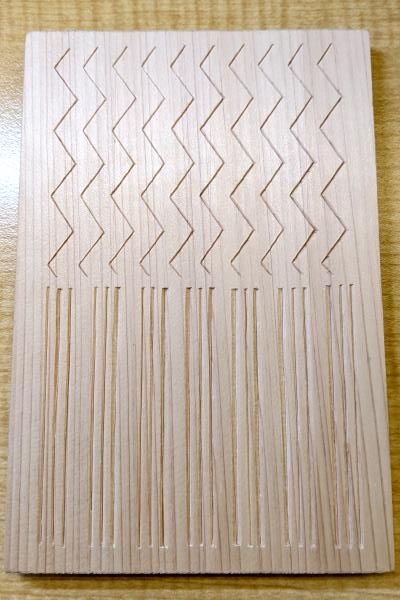
Preparation
Use carbon paper to trace "Yamajimon" and "Misujidate" onto a postcard-sized wooden board. This time, only the parts to be cut are copied onto it (the parts to be cut are described later).The sketch can be downloaded from here (PDF of Yamajimon and Misujitate ) , so please use it.
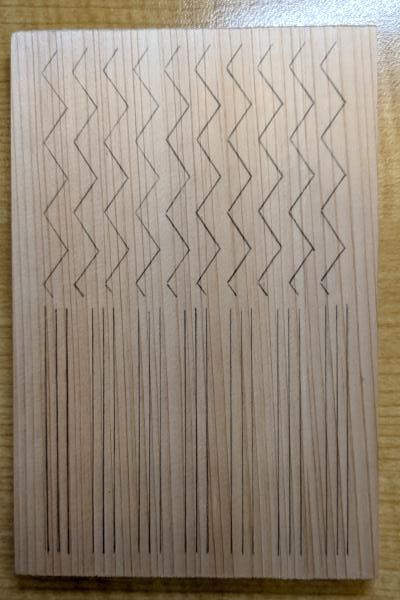
1. How to carve Yamajimon
Make a cut on the red line (left end of the black line) and carve the black line into the slope so that it intersects with the cut.
The cross section will look like this:
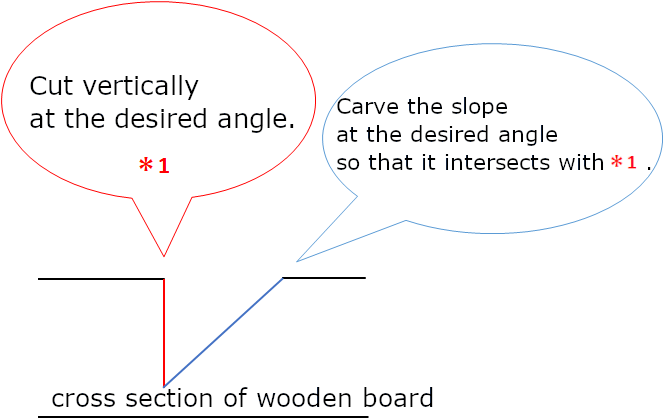
Make cuts in a zigzag pattern,
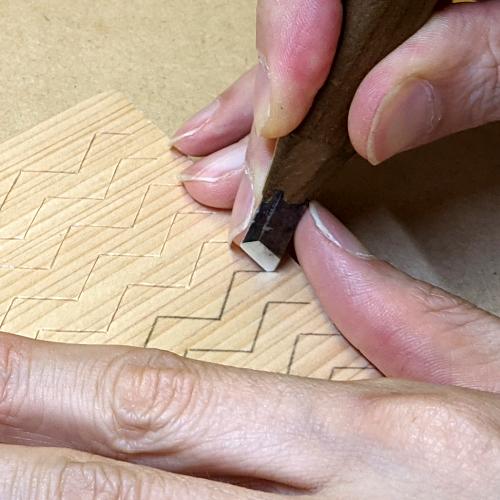
carve a slope so that it intersects with the cut. By using the front and back blades of a sharp chisel to carve, you can obtain beautiful carving marks.
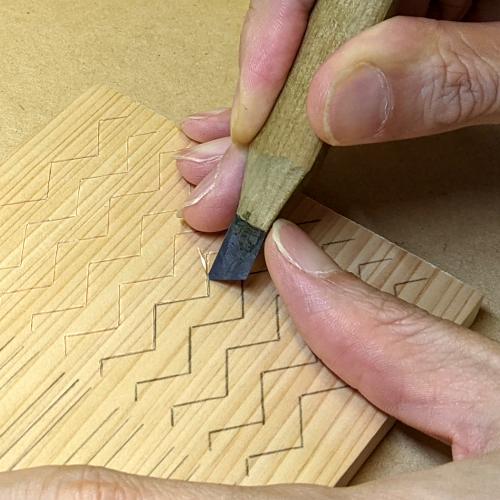
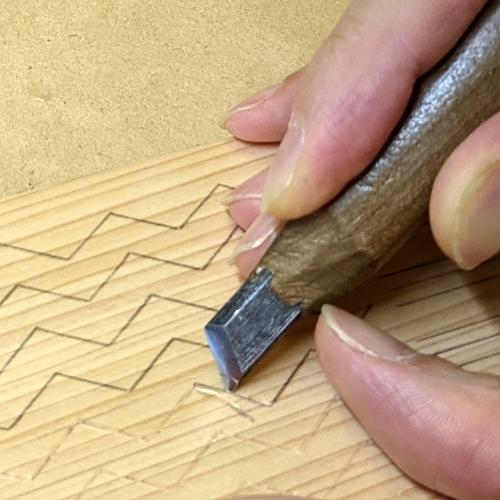
Carve straight lines and zigzag points neatly.
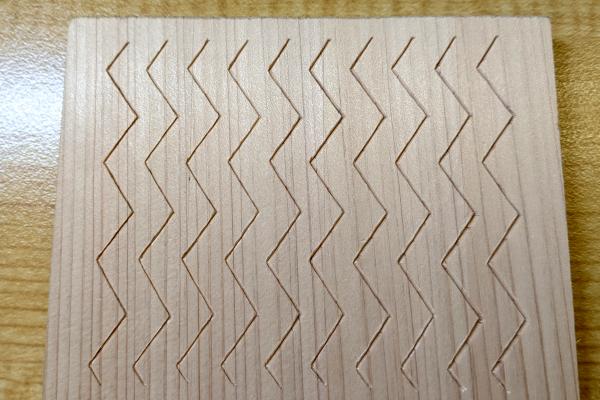
2. How to carve Misujidate
Make a cut on the red line (in the center of the black line) and carve a slope on the side black line along the cut.
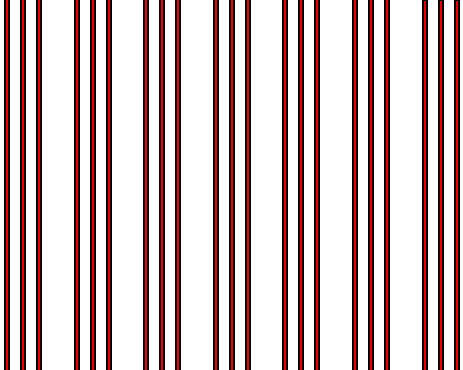
The cross section will look like this:
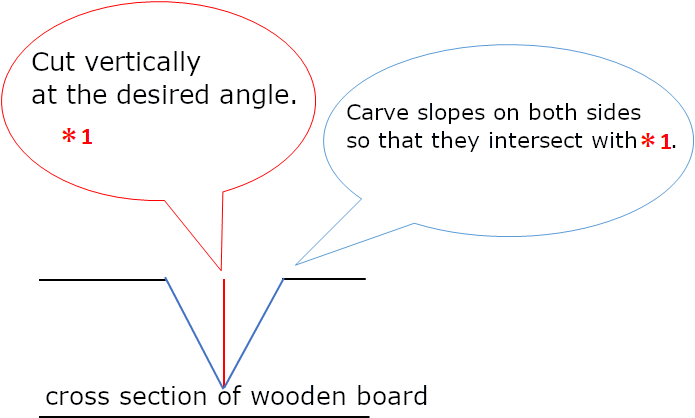
Make a straight cut,
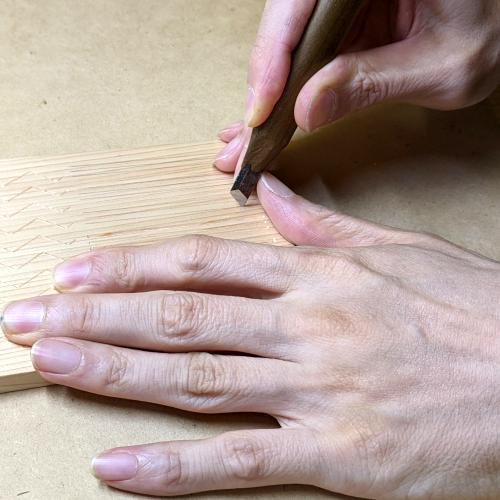
carve slopes on both sides to intersect with the cut. By using the front and back blades of a sharp chisel to carve, you can obtain beautiful carving marks. Although Sansujidate looks simple, it is a difficult pattern to carve neatly. From the moment you put the chisel into the wood, you need to sharpen your senses and work without distraction.
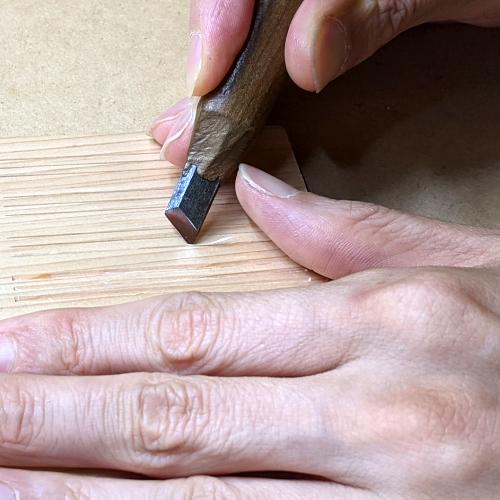
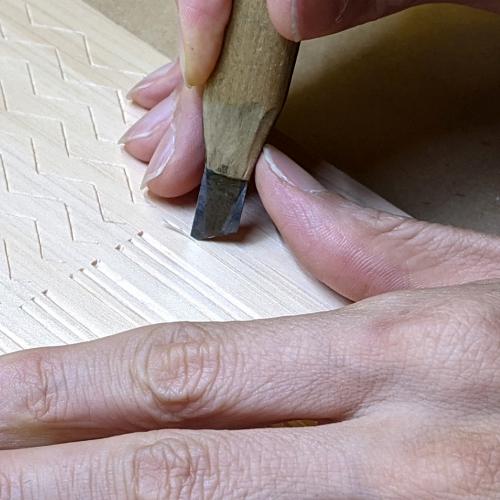
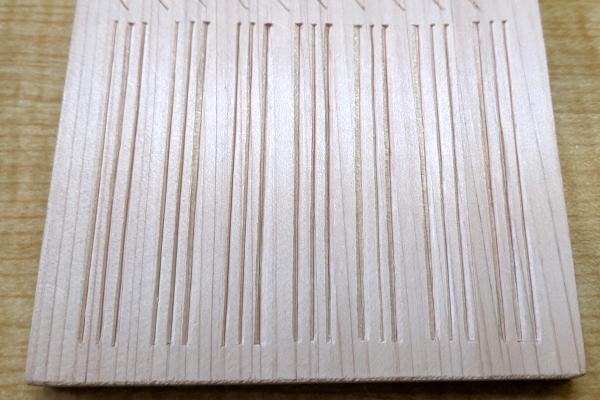
How to carve patterns
- From the lattice to the scales
- Raimon
- Asanoha and Sayagata
- Seigaiha and Sippo-Tsunagi
- Higaki and Kumikikko
- Mimasu-Tsunagi and Mimasu-Chirashi
- Ryusui
- Bundo-Tsunagi and Tatewaku
- Yamajimon and Misujidate ←Current page displayed
- Kemanmon and Gobosei
- Chidori and Chidori-Goshi
- Nejiume (Twisted plum)
- Kikubishi and Yaegiku
- Ichimatsu and Sankuzushi
- Kikko and Yagasuri
- Clouds
- Waves


